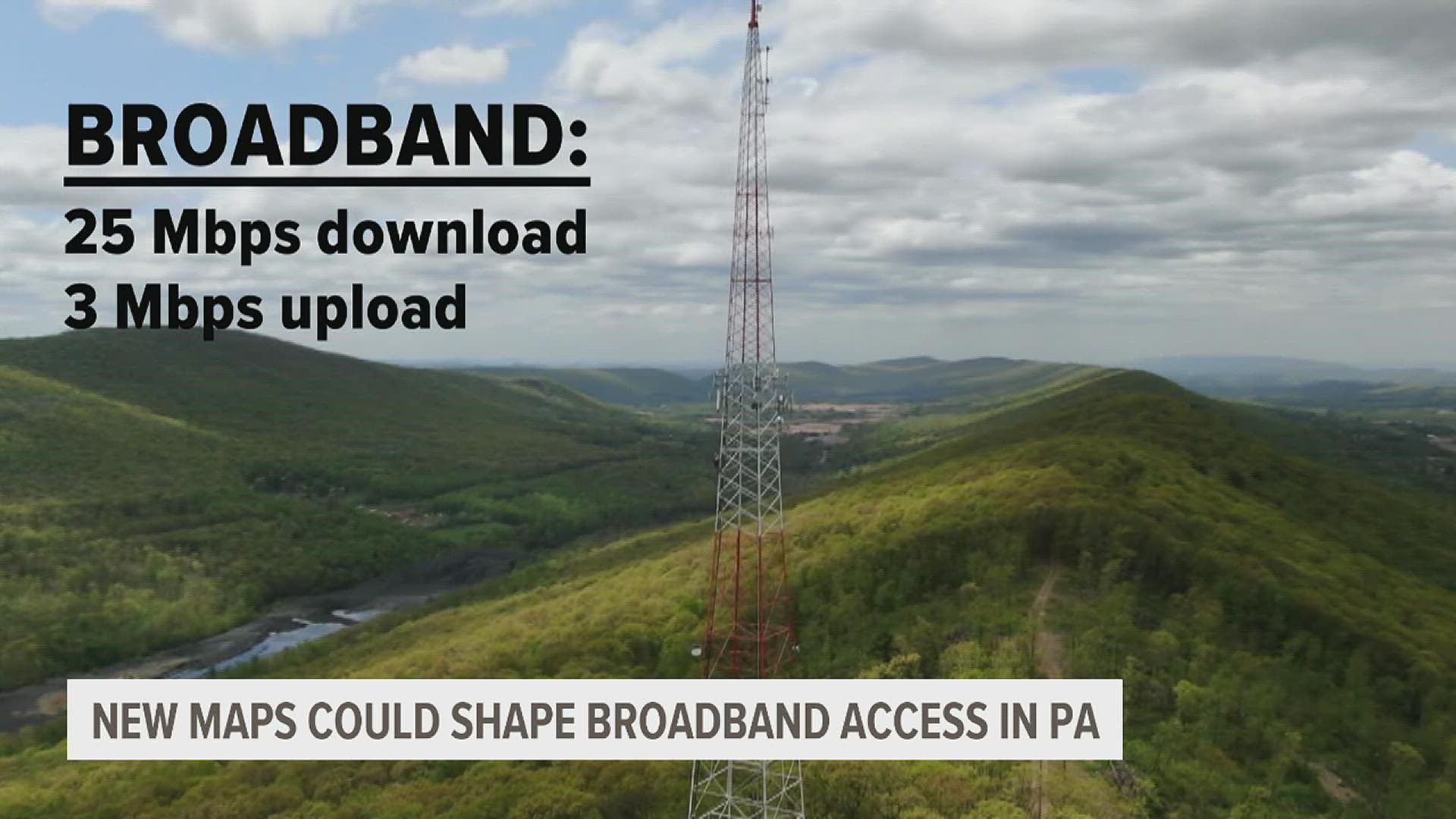PENNSYLVANIA, USA — As part of the Infrastructure Investment and Jobs Act passed in 2021, Pennsylvania could be eligible for up to one billion dollars in federal funding for broadband expansion.
"We have counties that are doing different things, or planning some things doing different strategies," County Commissioners Association of Pennsylvania Executive Director Lisa Schaefer said. "This is going to help us make sure we aren't missing places."
The FCC defines broadband, or high-speed Internet access, as 25 megabits of download and three megabits of upload per second.
"Unserved" areas are where most internet connection speeds don't meet that threshold, and "underserved" are where most internet connection speeds fall under 100 megabits of download and 20 megabits of upload per second.
New maps are essential in determining priority in where the needs are the greatest.
"Those communities that are unserved will get first priority followed by underserved," Executive Director of the Center for Rural Pennsylvania Kyle Kopko said. "But we need to be able to identify those geographic areas within Pennsylvania first to determine who has priority for funding."
Kopko says that rural areas generally have less access to broadband internet, often due to a lack of infrastructure. This can cause issues for those who reside in those areas.
"So much of what we do is connected to the internet now, either for education, healthcare, business, or just entertainment," Kopko said. "If a community doesn't have access to good quality, high-speed internet, they're going to be at a disadvantage for engaging in a lot of the day-to-day activities that many of us might take for granted."
According to the latest data from the FCC, only 4% of Pennsylvanians cannot access broadband. However, that number jumps in rural areas to 13%.
Another factor in internet access is device availability.
"About 13% of rural households don't have a computer," Kopko said. "There are about 218,000 households as of the last census capture date, where they don't have a device that could get them online"
While the lack of service is predominantly rural, the issue can affect a wide range of people.
"We even saw gaps, even in our urban areas where there were pockets, even issues with access," Schaefer said. "Getting the actual fiber out- the information- out is critical, but then, so is making sure there's access."

